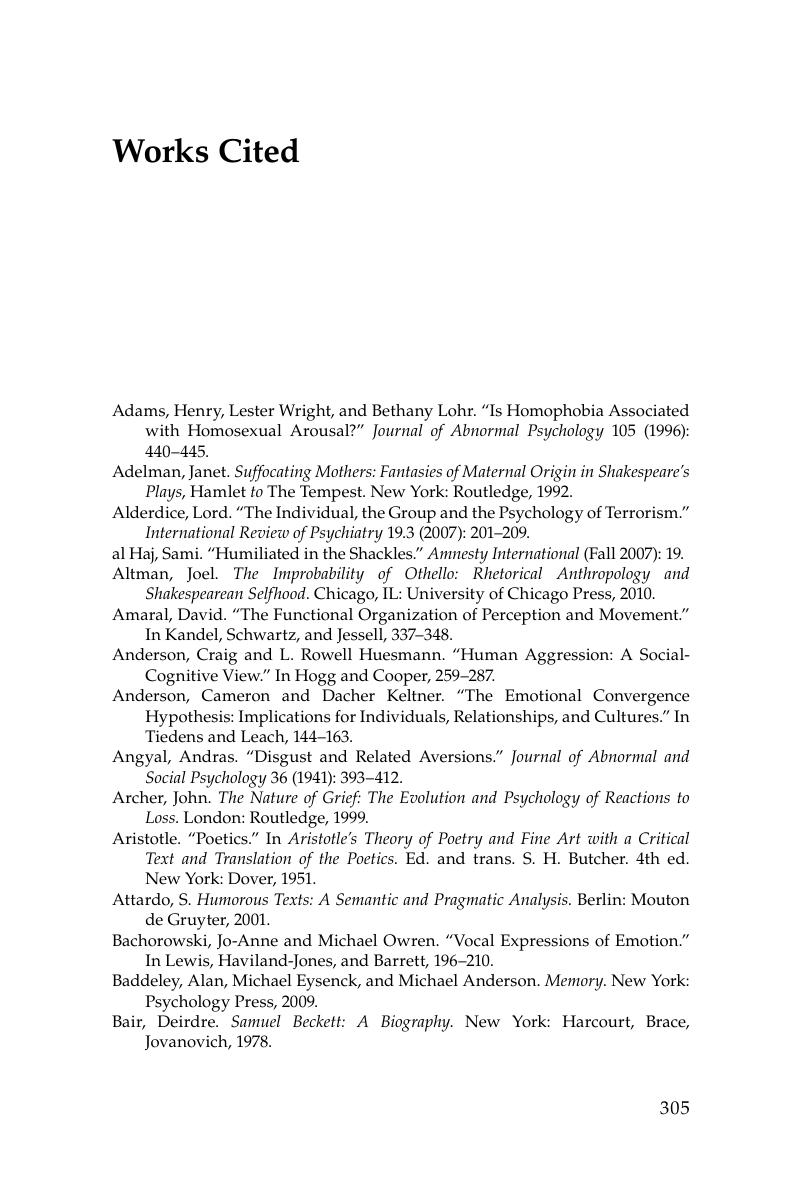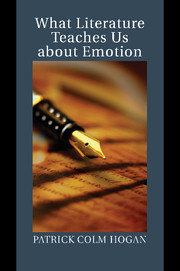Book contents
- Frontmatter
- Contents
- List of Figures
- Acknowledgments
- Introduction: Studying Literature Studying Emotion
- 1 Fictions and Feelings
- 2 What Emotions Are
- 3 Romantic Love
- 4 Grief
- 5 Mirth
- 6 Guilt, Shame, Jealousy
- 7 From Attachment to Ethical Feeling
- 8 Compassion and Pity
- Afterword: Studying Literature Shaping Emotion
- Works Cited
- Index
- Title in the series
- References
Works Cited
Published online by Cambridge University Press: 03 May 2011
- Frontmatter
- Contents
- List of Figures
- Acknowledgments
- Introduction: Studying Literature Studying Emotion
- 1 Fictions and Feelings
- 2 What Emotions Are
- 3 Romantic Love
- 4 Grief
- 5 Mirth
- 6 Guilt, Shame, Jealousy
- 7 From Attachment to Ethical Feeling
- 8 Compassion and Pity
- Afterword: Studying Literature Shaping Emotion
- Works Cited
- Index
- Title in the series
- References
Summary

- Type
- Chapter
- Information
- What Literature Teaches Us about Emotion , pp. 305 - 322Publisher: Cambridge University PressPrint publication year: 2011



